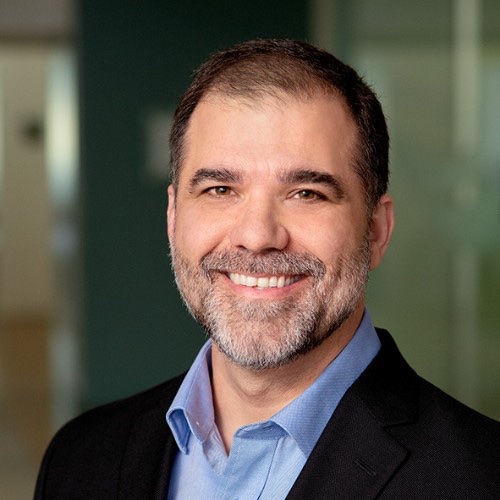We recently reported technology analyst firm Wikibon’s thesis that SSDs will replace disk drives in enterprise data centres. So what do the hard drive makers have to say for themselves?
Let’s find out from Dr. John Morris, CTO at Seagate, the world’s biggest HDD maker. He notes that currently there is a 7-10x difference in raw cost per bit between flash and disk. Furthermore, raw cost per bit is the “dominant factor in a total cost of ownership equation today”.
Morris in a phone interview expressed confidence that the “economics [of flash vs HDD] are going to stay roughly in equilibrium, and the architectures that we see today are going to be the preferred architectures for the next five or 10 years.”

He thinks that proponents of “SSDs will kill disks” fail to factor in the role of large data centre demand in driving storage capacity growth. “Maybe one or two years ago, we hit a point where about 50 per cent of the data is in a large data centre and about 50 per cent is everywhere else.”
“Large data centre growth rate is in the 30 per cent per year range, whereas any of the other use cases are kind of flat from an exabyte perspective and over time. Our expectation is that over the next five years we’re going to see 90 per cent of the data in this large data centre use case. – whether it’s public or private is kind of irrelevant.”
In these large, exabyte-scale data centres there will be a “fairly robust mix of flash and disk – something on the order of 90 per cent on disk and approximately 10 per cent on flash”.
So, the two storage mediums will continue to co-exist. “Flash and disk actually have a symbiotic relationship,” he said. “Today, you can’t scale a storage system without both. They both have a unique value proposition. And it’s the combination of those unique value propositions that they offer that allows you to create the massive data centre that we all benefit from today.”
Raw capacity cost comparisons
The flash and hard disk industries are both forecasting cost per bit improvements of about 20 per cent a year, according to Morris. If those expectations pan out, “we’re going to stay roughly in equilibrium in terms of rough cost per bit for the foreseeable future.” This view is shared publicly by some of the large cloud companies, he adds.

Smaller data centres
Flash will not takeover from disk in smaller, petabyte-scale data centres either, according to Morris.
“It comes down to what is the use case dominated by – a performance-centric metric or a cost-centric metric? I think there’s both. In those infrastructure that have an extreme sensitivity to cost people are going to exploit the capabilities of of hard disk. whereas if your performance or power-sensitive, I think you’re going to see a gravitation towards a flash architecture.”
Asymmetric IO
Morris points to the asymmetric IO profiles of data in large repositories: “At any given point in time, the IO into that volume storage; up to 10 per cent of the total storage has active IO and 80 to 90 per cent of that storage volume does not have active IO.”
“Active IPOs are tiered or cached on flash, providing a very good … random IO capability, and everything else is committed to a lower cost infrastructure which is on hard disk.”
The data held on disk is not inert: “It’s also a little bit of a misnomer, to think that there’s no IO happening on everything else, it is happening, but it can be done in a way that is able to efficiently use the disk drive architecture so you’ll see relatively large block IO happening on the disk. You’ll see 10s of megabytes per second of bandwidth, on every disk in that architecture and you’ll see good utilisation of all the disks. It’s that very good IO capability that you get out of that large pool of disk that actually makes the whole work well together.”
Influence of QLC flash
The arrival of QLC (4bits/cell) flash will not change flash-HDD dynamics, according to Morris. He thinks supporters of a QLC SSD takeover of disk drives base their argument on data reduction: “They’ll use data reduction and make a statement like because flash has orders of magnitude more random capability, you can do on the fly dedupe and compression with QLC; you can’t do that with hard disk. Therefore, I’m going to apply a 4 x or better multiplier on the effective capacity of flash and I won’t apply that to disk. If I do that in five years there’s parity of costs.”
In other words the raw cost per bit of disk is being compared to the effective cost per bit of flash, after data reduction. However, cost comparisons should be made on a raw capacity basis for both mediums, he argues.
“It is true that flash is able to do on the fly dedupe and compression very effectively. It’s actually not true that you can’t do it with hard disk. In fact, it is done with the hyperscale architectures today. Dedupe and compression are done higher up in the stack. and when data is ultimately committed to the media it’s already been deduped and compressed and in many cases encrypted.”








